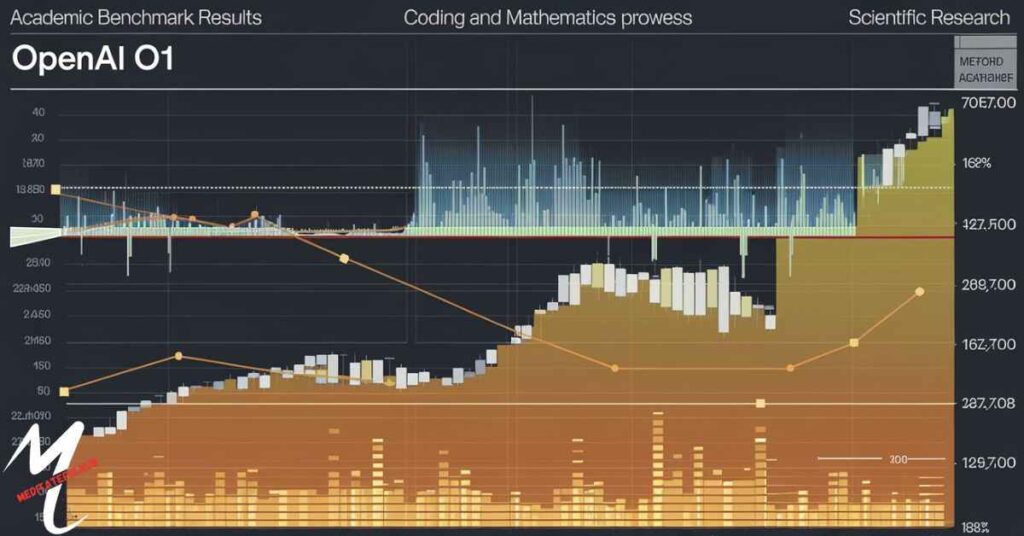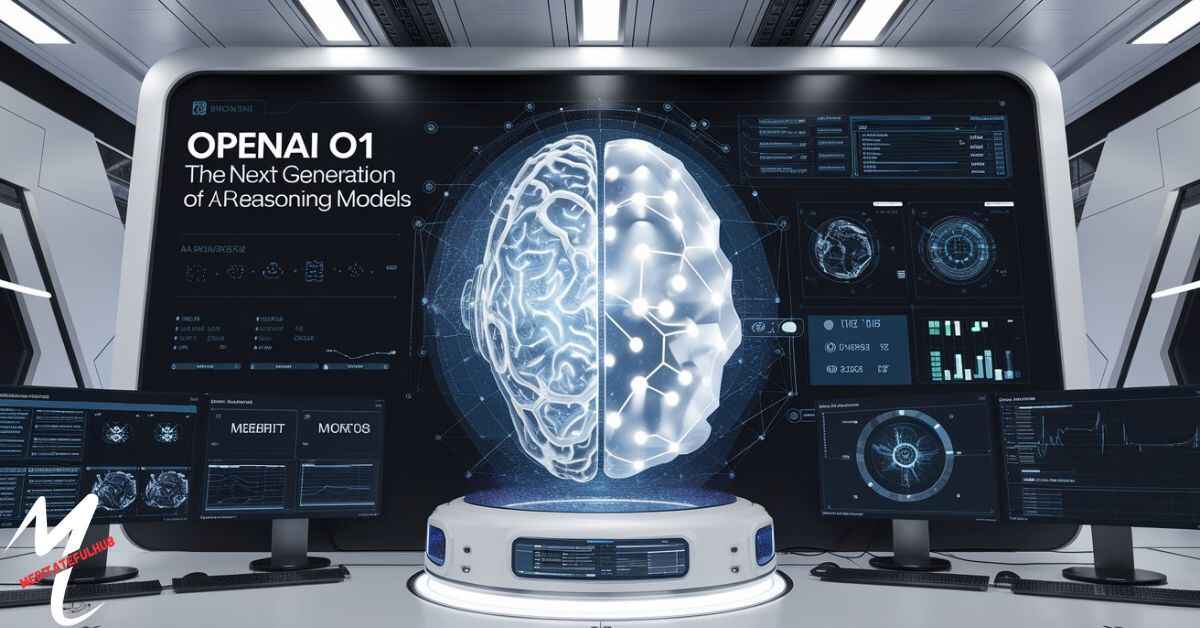OpenAI’s latest release, o1, marks a significant leap in AI reasoning capabilities. Many current AI models struggle with complex problem-solving, limiting their usefulness in advanced fields. This gap has frustrated researchers and professionals seeking more sophisticated AI assistance. OpenAI o1 addresses this challenge head-on, offering enhanced reasoning skills that promise to revolutionize AI applications in science, coding, and mathematics.
What is OpenAI o1?
OpenAI o1 is a new AI model series designed for advanced reasoning. It’s built to tackle complex problems in science, coding, and math. This model stands out from previous versions due to its improved thinking abilities.
OpenAI o1 Preview
The OpenAI o1 preview is the main model in the series. It offers the most advanced reasoning capabilities. This flagship model is designed for complex tasks that require deep analysis and problem-solving skills.
OpenAI o1-mini
OpenAI o1-mini is a smaller version of the main model. It’s faster and uses less computational power. This compact model is ideal for tasks that need quick responses or for use on devices with limited resources.
Scientific Research Applications
OpenAI o1 has many uses in scientific research. It can help analyze complex data, generate hypotheses, and solve difficult problems. The model’s advanced reasoning is valuable in fields like physics, biology, and chemistry.
Coding and Development Use Cases
In software development, OpenAI o1 offers powerful coding assistance. It can help write complex algorithms, debug code, and generate efficient solutions. The model’s understanding of programming concepts makes it a valuable tool for developers.
Performance Metrics of OpenAI o1

OpenAI o1 shows impressive performance in various tests. It handles complex tasks with high accuracy. The model’s capabilities are measured against human experts in different fields.
Academic Benchmark Results
In academic tests, OpenAI o1 performs well in physics, chemistry, and biology. It can solve complex scientific problems at an advanced level. The model’s understanding of scientific concepts is comparable to that of PhD students.
Coding and Mathematics Prowess
OpenAI o1 excels in coding competitions and mathematical challenges. It can solve difficult programming problems and tackle advanced math questions. The model’s skills in these areas are particularly noteworthy.
Key Features of OpenAI o1
OpenAI o1’s key features include enhanced problem-solving skills and deeper analysis capabilities. It can handle more challenging tasks than earlier AI models. The system excels in areas requiring in-depth reasoning.
How OpenAI o1 Works
The technology behind OpenAI o1 focuses on mimicking human-like thought processes. It uses advanced algorithms to analyze problems from multiple angles. This approach allows for more thorough and accurate solutions to complex issues.
Enhanced Thinking Process
OpenAI o1 takes more time to consider problems before responding. This extra processing time leads to more thoughtful and precise answers. The model evaluates various strategies before settling on the best solution.
Training Methodology
The training for OpenAI o1 involved teaching it to refine its thinking process. It learned to try different approaches and recognize its own mistakes. This method helps the AI improve its problem-solving skills over time.
The OpenAI o1 Model Family
The OpenAI o1 series includes different versions of the model. Each variant is designed for specific uses or performance levels. This range allows users to choose the best fit for their needs.
Pricing and Availability of OpenAI o1
OpenAI o1 is available through various platforms. Pricing depends on the specific model and usage level. Users can access it via API or through integrated services like ChatGPT Plus.
Read This Blog: Software Doxfore5: Unveiling Next-Gen Document Management
Comparison with GPT-4o Pricing
Here’s a simple pricing comparison between OpenAI o1 and GPT-4o:
| Model | Input (per 1M tokens) | Output (per 1M tokens) |
| OpenAI o1 | $15.00 | $60.00 |
| GPT-4o | $2.50 | $10.00 |
OpenAI o1 is more expensive, reflecting its advanced capabilities.
OpenAI o1 vs. GPT-4o: A Comprehensive Comparison
OpenAI o1 is designed to outperform GPT-4o in complex reasoning and problem-solving tasks. While GPT-4o excels in general-purpose tasks, o1 focuses on deeper thinking, making it better suited for advanced domains like science, math, and coding. OpenAI o1 has shown improved accuracy and more efficient handling of complex tasks compared to GPT-4o.
| Feature | OpenAI o1 | GPT-4o |
| Reasoning Skills | Advanced | Basic |
| Task Focus | Complex tasks | General tasks |
| Accuracy | Higher | Lower |
Reasoning Capabilities
OpenAI o1 outshines GPT-4o in reasoning tasks, showing the ability to solve harder problems by spending more time thinking. OpenAI o1 scored 83% in math challenges like the International Mathematics Olympiad, while GPT-4o managed only 13%. This makes o1 more effective in complex reasoning scenarios.
Specialized Task Performance
In science and mathematics, OpenAI o1 delivers outstanding results. It ranks in the 89th percentile on programming tasks and exceeds human PhD-level accuracy in subjects like physics and biology. GPT-4o, on the other hand, struggles with tasks of this complexity, making o1 the preferred choice for specialized domains.
Also Read: AMS39K: Revolutionizing Industry Standards with Innovative Technology
OpenAI o1 vs. Claude 3.5 Sonnet: Competitive Analysis
OpenAI o1 and Anthropic’s Claude 3.5 Sonnet are top competitors in advanced reasoning. While OpenAI o1 excels in problem-solving and safety, Claude 3.5 Sonnet offers a larger context window (500K) for extensive tasks. Both models are strong, but o1 focuses more on reasoning while Claude is better for code-related tasks.
| Feature | OpenAI o1 | Claude 3.5 Sonnet |
| Reasoning Ability | Superior | High |
| Context Window | 128K | 500K |
Reasoning and Context Handling
OpenAI o1 is built for deep reasoning, with a 128K context window, ideal for tasks requiring attention to detail. Claude 3.5 Sonnet, however, has a much larger 500K context window, making it a better option for tasks that involve processing vast amounts of data. Both are great, but each serves different needs.
Safety and Compliance Features
OpenAI o1 scores higher on safety measures compared to both GPT-4o and Claude 3.5 Sonnet. It is more resistant to jailbreaking attempts, making it better at adhering to safety rules. Claude 3.5 Sonnet performs well but does not match o1’s stringent safety protocols. OpenAI o1’s advanced compliance makes it a safer choice for complex environments.
| Feature | OpenAI o1 Safety | Claude 3.5 Safety |
| Jailbreaking Score | 84 | Lower |
FAQ
What makes OpenAI o1 different from previous AI models?
OpenAI o1 has better reasoning skills. It can solve harder problems in science, coding, and math.
How can I access OpenAI o1?
You can use OpenAI o1 through an API or ChatGPT Plus. The price depends on which version you choose.
Is OpenAI o1 suitable for non-technical users?
The document doesn’t say. It focuses on o1’s use in complex fields like science and coding.
How does OpenAI o1 compare to human experts in specific fields?
OpenAI o1 performs well against human experts. In some tests, it’s as good as PhD students in science subjects.
What are the limitations of OpenAI o1?
The document doesn’t mention specific limits. It mostly talks about o1’s strengths.
Conclusion
OpenAI o1 seems to be a big step forward in AI. It’s really good at hard tasks in science, math, and coding. The AI thinks more like humans do. It can solve tricky problems better than older AIs. While it costs more, it might be worth it for tough jobs. But we don’t know much about how normal people might use it. Overall, o1 looks impressive for complex work.
Remash is a dedicated tech enthusiast and writer for Meditatefulhub.com. With a passion for exploring the latest in technology, Remash brings insightful articles and reviews to help readers stay informed in the ever-evolving tech landscape.








![How to Cancel Your Brazzers Subscription Complete Guide [2024]](https://meditatefulhub.com/wp-content/uploads/2024/11/How-to-Cancel-Your-Brazzers-Subscription-Complete-Guide-2024-300x157.jpg)


